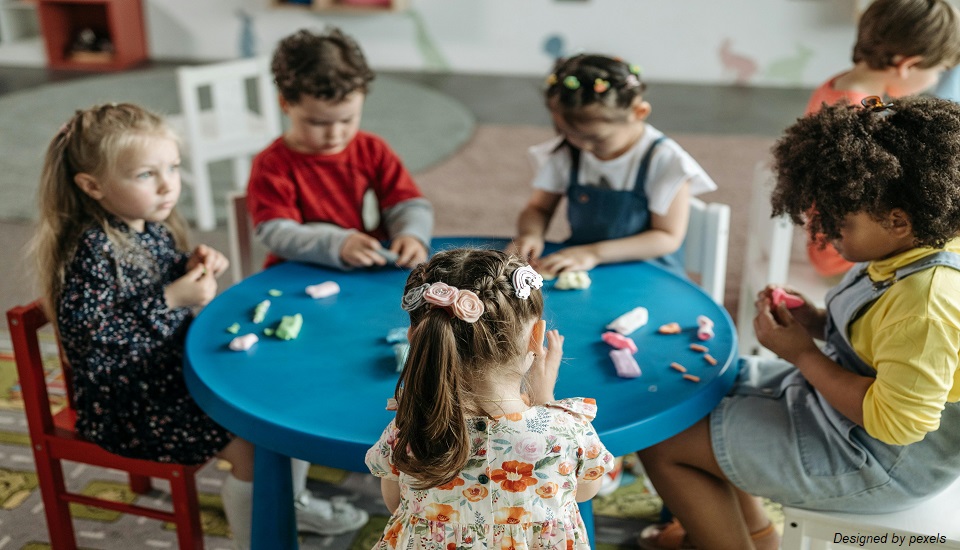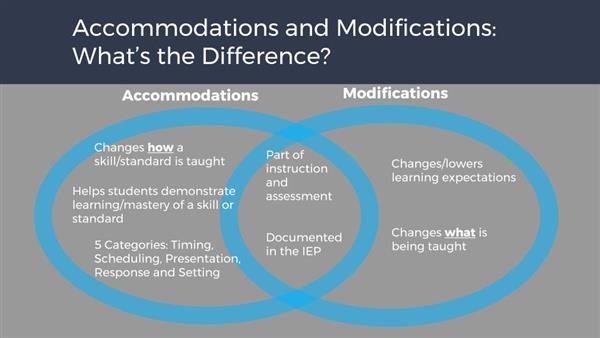Accommodation And Modification In IEP: Are The Same Or Is There A Difference?
22nd November 2023

Accommodations and modifications are the terms mostly used in special education fields. they both refer to the changes that are made to enable people with disabilities to succeed. regardless of the specific characteristics, meanings, and perspectives, these two terms have been used interchangeably for quite some time now. However, to break the ice it is crucial to know the difference between accommodations and modifications that can exist. Here are points to clear the view about each term.
What is Accommodation?
Accommodation means the change in procedures used or applied in certain areas to complete a given task. However, the measurable component is not changed. For instance, a student in a classroom might get extra time on a test to reduce distractions. Here the procedures of the test will be accommodated or modified to help the students succeed. But they will be graded on the same rubrics as set by the institutions.
Some examples of accommodation include:
- Hands-on activities
- Enabling quieter environments for students to take tests
- Seating average or poor-performing students at the front
- Offering additional tutoring time
- Providing study guides
- Reducing assignment or homework load
- Applying positive reinforcement strategies
- Handing out large print learning materials
What is Modification?
Modification means changing what's being tested or learned, but the way it's done stays the same. For example, a student could take a spoken spelling test instead of a written one. In this situation, only the test changes, but the procedure of completing the test remains the same.
Some examples of modifications include:
- Allowing students to use calculators
- Reducing their reading levels
- Minimizing the number of similar questions
- Simplifying the lessons to increase student understanding
- Modifying the vocabularies with simpler synonyms
- Adjusting the grade level
What Is The Difference Between Accommodations and Modifications?

The major difference between the two terms can be understood from the following:
- Meaning
Accommodations affect how a student learns Without altering the material that students are expected to study or be assessed on. This may entail making adjustments to the equipment, curriculum, or learning environment.
Modifications affect the material that students learn or are being assessed on. This could entail modifying the curriculum, lowering the bar for assessments, condensing assignments, or employing easier resources.
- Classroom Instructions
Accommodations help students use the same materials and meet the same expectations as others. A child with dyslexia might listen to the audio version of the same material that is being read in the class. while a student having trouble focusing might get seated next to the instructor to facilitate a better grasp of the content.
Modifications on the other hand change what a student is expected to learn compared to their peers. A student with learning disabilities might be assigned easier or shorter reading assignments and homework that are different from other learners in the class. Children who avail modifications are not expected to learn the same study materials as their peers.
- Classroom Tests
Accommodations may change how a student takes a test, like giving them more time or additional resources. Students with writing challenges might be allowed to use spellcheck while taking notes or writing in class. However, it cannot be used during a spell test.
Modifications while testing might change the test or materials to make them simpler or different from the usual ones. A class might be required to study 20 words for their spelling test, but a student who receives modification might have to study only 10 of them. there might also be two different sets of words to take tests of students with and without modifications.
- Standardized Testing
With accommodations, a student might get extra time or use tools like a computer or calculator during standard tests. It is also best if the child is given the same accommodations to take regular class tests as well.
With modifications, a student might take a different kind of test or a modified version of the regular one. In such cases, students might have fewer questions or might not cover the same materials as others. Also, the results might be interpreted differently.
- Arts, Music And PE Classes
Accommodations for these special classes might be helpful for some kinds. They can be similar to the ones used in the regular classrooms. Kids might be allowed extra time to play or learn an instrument or complete an art project.
Modifications for such special classes can be made if you feel these special classes are unreasonable for your child. A PE teacher, for example, might reduce the number of laps a student has to run. Or, the music teacher might not require a particular child to read or learn music if they don’t want to.
Understand Your Child’s Needs And Make An Approach Accordingly
Accommodations and modifications are slightly different based on what a child is learning and how they are learning. It varies from child to child basis and needs to be altered now and then. As special educators, since you have already completed offline or online special education courses, you need to remember that accommodations do not always have to be made in formalized IEPs or 504 plans. You can just provide support on your own if you feel the child needs it.
We believe education should be accessible for everyone. That’s why we don’t charge for our blogs. Find the right course that will help you in your career with us, contact us at - + 6621056101. You can mail us at act@asiancollegeofteachers.com

